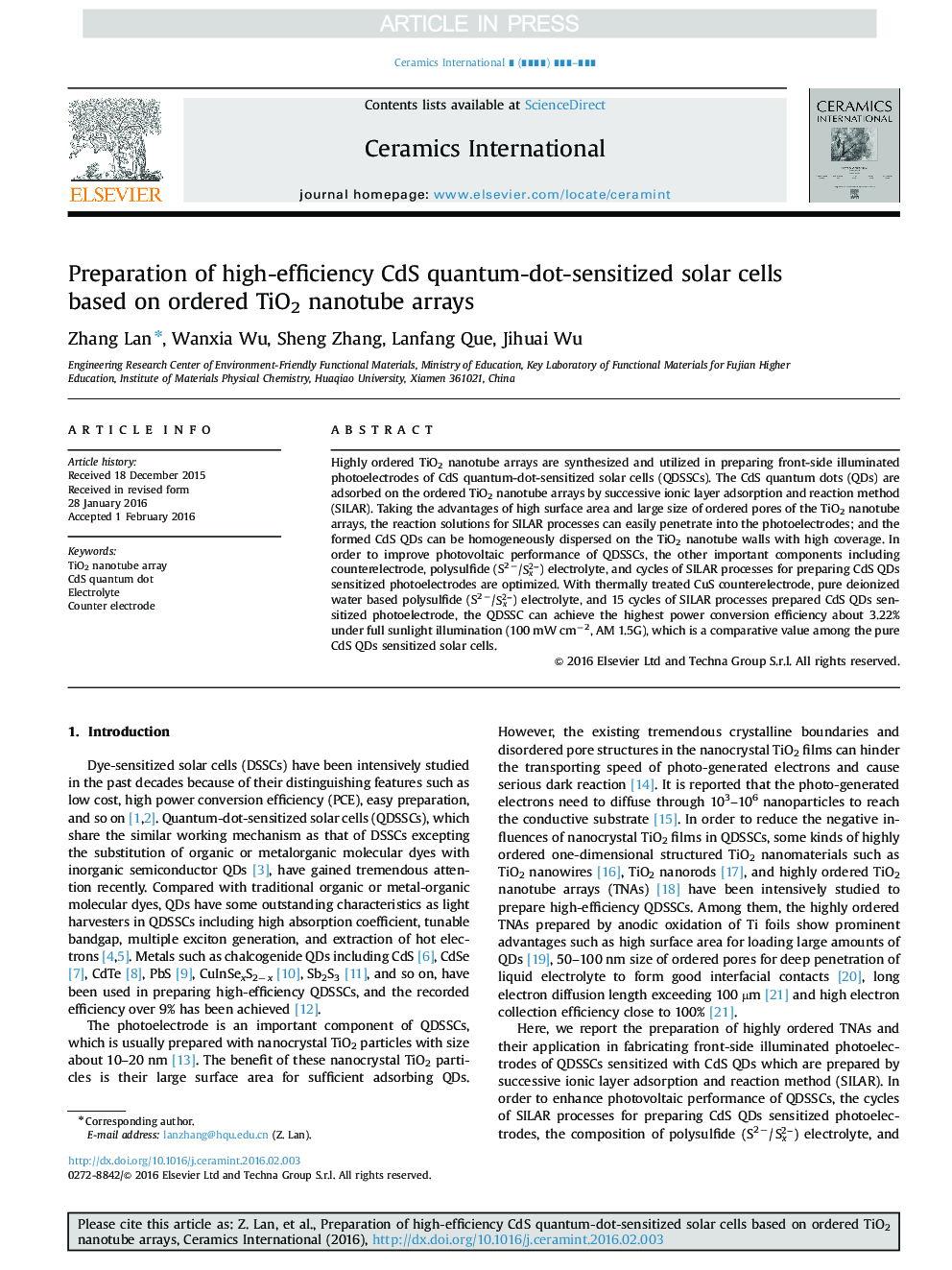| Article ID | Journal | Published Year | Pages | File Type |
|---|---|---|---|---|
| 10624144 | Ceramics International | 2016 | 8 Pages |
Abstract
Highly ordered TiO2 nanotube arrays are synthesized and utilized in preparing front-side illuminated photoelectrodes of CdS quantum-dot-sensitized solar cells (QDSSCs). The CdS quantum dots (QDs) are adsorbed on the ordered TiO2 nanotube arrays by successive ionic layer adsorption and reaction method (SILAR). Taking the advantages of high surface area and large size of ordered pores of the TiO2 nanotube arrays, the reaction solutions for SILAR processes can easily penetrate into the photoelectrodes; and the formed CdS QDs can be homogeneously dispersed on the TiO2 nanotube walls with high coverage. In order to improve photovoltaic performance of QDSSCs, the other important components including counterelectrode, polysulfide (S2â/Sx2-) electrolyte, and cycles of SILAR processes for preparing CdS QDs sensitized photoelectrodes are optimized. With thermally treated CuS counterelectrode, pure deionized water based polysulfide (S2â/Sx2-) electrolyte, and 15 cycles of SILAR processes prepared CdS QDs sensitized photoelectrode, the QDSSC can achieve the highest power conversion efficiency about 3.22% under full sunlight illumination (100Â mWÂ cmâ2, AM 1.5G), which is a comparative value among the pure CdS QDs sensitized solar cells.
Related Topics
Physical Sciences and Engineering
Materials Science
Ceramics and Composites
Authors
Zhang Lan, Wanxia Wu, Sheng Zhang, Lanfang Que, Jihuai Wu,
